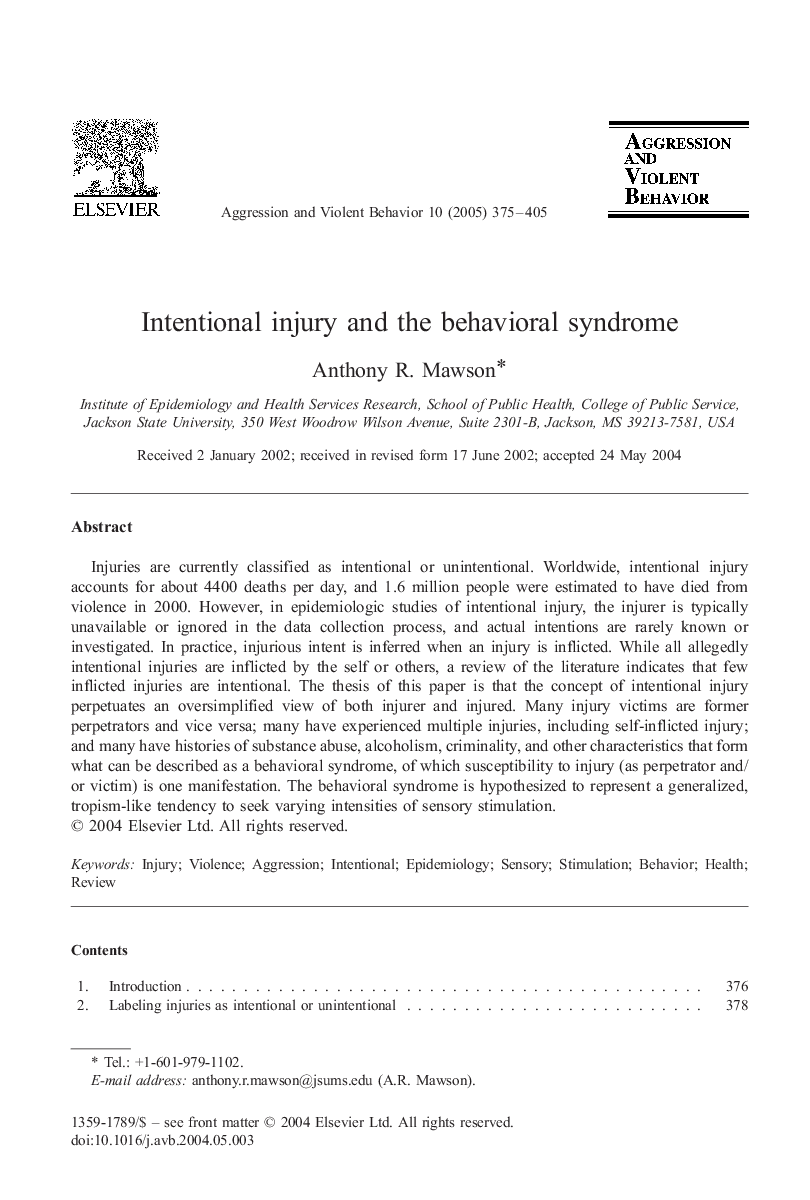| Article ID | Journal | Published Year | Pages | File Type |
|---|---|---|---|---|
| 10252428 | Aggression and Violent Behavior | 2005 | 31 Pages |
Abstract
Injuries are currently classified as intentional or unintentional. Worldwide, intentional injury accounts for about 4400 deaths per day, and 1.6 million people were estimated to have died from violence in 2000. However, in epidemiologic studies of intentional injury, the injurer is typically unavailable or ignored in the data collection process, and actual intentions are rarely known or investigated. In practice, injurious intent is inferred when an injury is inflicted. While all allegedly intentional injuries are inflicted by the self or others, a review of the literature indicates that few inflicted injuries are intentional. The thesis of this paper is that the concept of intentional injury perpetuates an oversimplified view of both injurer and injured. Many injury victims are former perpetrators and vice versa; many have experienced multiple injuries, including self-inflicted injury; and many have histories of substance abuse, alcoholism, criminality, and other characteristics that form what can be described as a behavioral syndrome, of which susceptibility to injury (as perpetrator and/or victim) is one manifestation. The behavioral syndrome is hypothesized to represent a generalized, tropism-like tendency to seek varying intensities of sensory stimulation.
Related Topics
Health Sciences
Medicine and Dentistry
Forensic Medicine
Authors
Anthony R. Mawson,
